Popular TV series takes Tang Dynasty heroine and culture worldwide, Xu Fan reports.
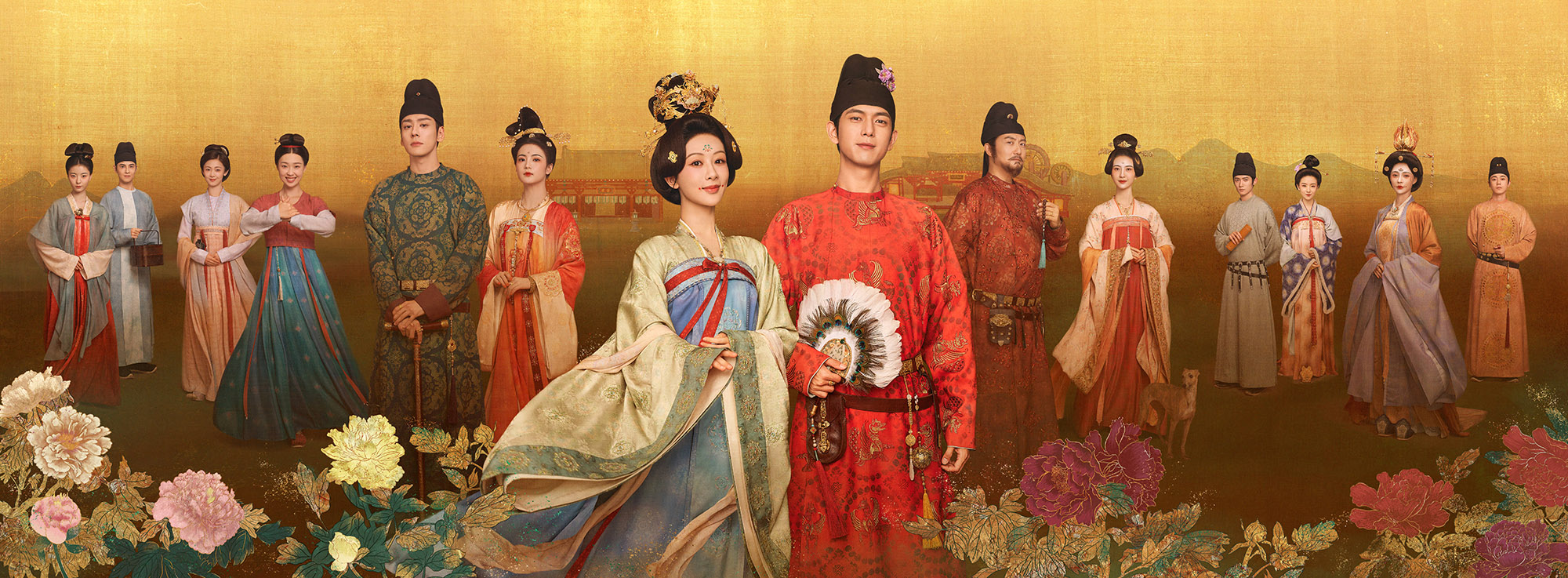
"Xishi is unparalleled among the beauties, the peony is the most fragrant of the flowers." Tang Dynasty (618-907) poet Bai Juyi wrote these lines in praise of the most cherished flower grown in the gardens of emperors and aristocrats.
Although it is one of his lesser-known verses, it inspired the name of the protagonist in Flourished Peony, a popular costume drama that has amassed a staggering 4 billion views since its debut on Hunan Television and on streaming platforms Mango TV and Migu in early January.
The character's name, He Weifang, is derived from two words in Bai's poem, and she is also nicknamed Mudan (peony).
READ MORE: Popular TV drama transforms into a bold yet challenging stage production
By the Spring Festival holiday, the 32-episode drama had topped the country's daily viewership charts for 20 days, according to industry tracker Beacon.
The series has also been screened on 10 popular foreign platforms like Netflix and Viki, reaching 73 countries and regions, including the United States, France, Spain, Italy, and Portugal.
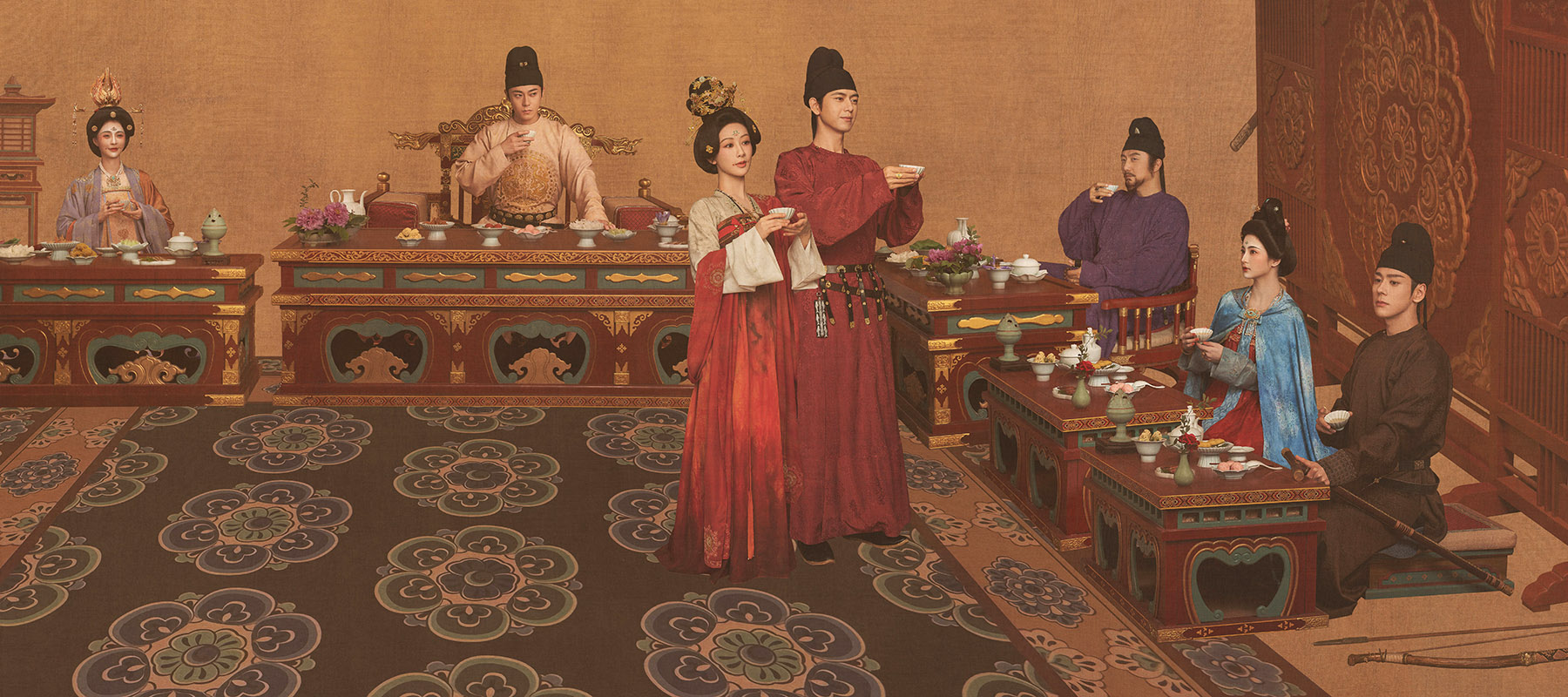
Actress Yang Zi plays the lead role as the daughter of a business owner, who inherits her late mother's skill at cultivating peonies. Actor Li Xian plays Jiang Changyang, a seemingly corrupt official whose title is "hua niao shi" ("imperial envoy of rare flowers and birds"), and who has been assigned by the emperor to collect treasures from across the country.
The drama has boosted the sale of peonies, as well as tourism in Heze, Shandong province, the country's largest producer of the flower. As the show's official partner, the city supplied more than 2,500 potted peonies and herbaceous peonies for filming.
Directed by Ding Ziguang, the story begins as He Weifang is forced into a marriage with a prestigious family of officials. The union is intended to secure a rare lifesaving medicine for her ailing mother that is given exclusively by the emperor to government officials. Due to her background, He endures her husband's constant disdain, as society at the time considered merchants inferior to officials.
Her subsequent journey during this feudal era, when men held dominance over women, becomes the stuff of legends. Using her wit to obtain a divorce — an extremely difficult feat for women in ancient China — she wins the appreciation and financial support of Jiang, who is actually working under the cloak of corruption to secretly gather intelligence for the national benefit.
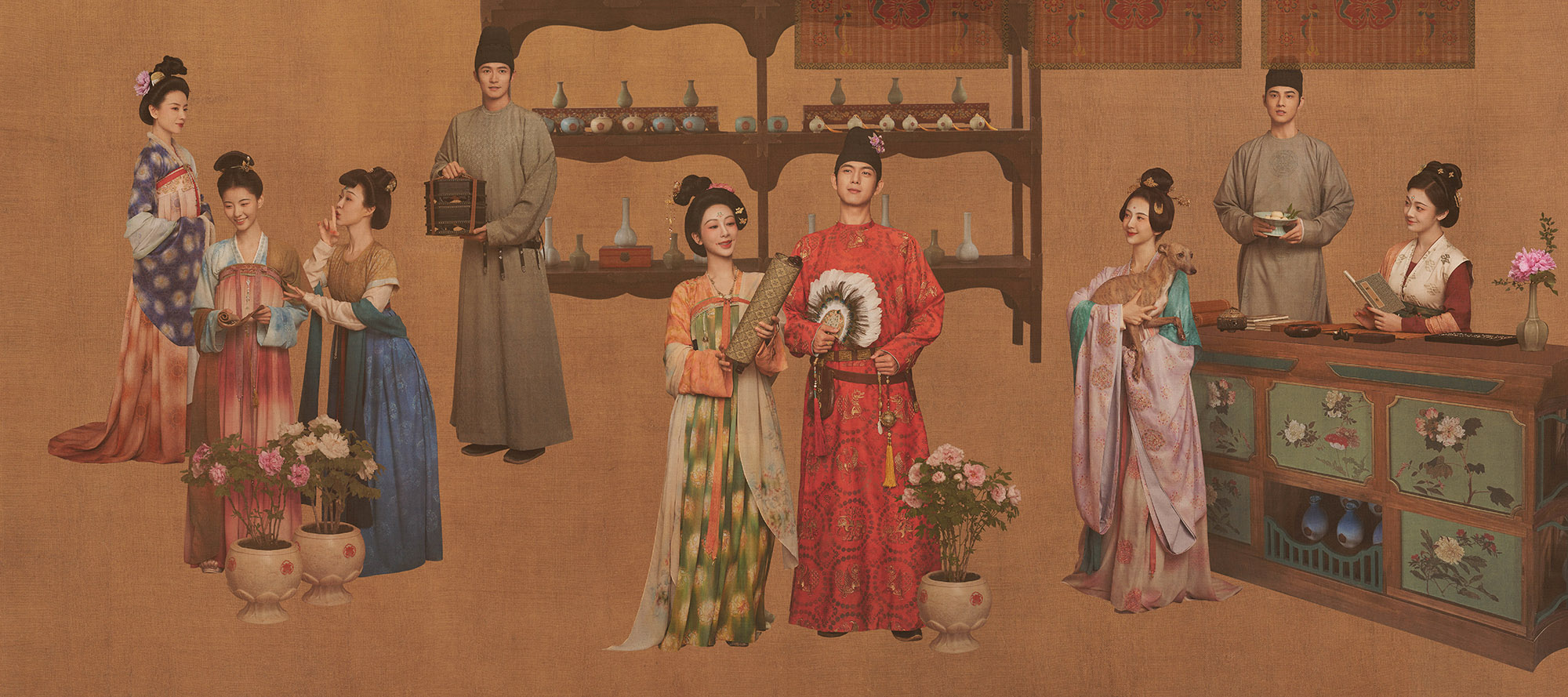
The heroine uses her skill at growing peonies to earn herself a fortune, and becomes a successful entrepreneur, with a thriving business. Along the way, she helps other women struggling with their own dilemmas, from a victim of domestic violence to a talented female doctor facing gender discrimination.
"When we took on this project, we spent a long time researching because we wanted every detail — from the costumes to the architecture and etiquette — to align with historical records of the Tang Dynasty as closely as possible," says Ding.
Eight months before filming, the art department began preparations, constructing key sets such as He's courtyard, which brims with the fragrance and vibrancy of flowers, and the luxurious Jiang family mansion.
"The palettes of the sets were carefully chosen to reflect the personalities of the different characters," Ding explains.
Bustling Dongshi (East Market) and Xishi (West Market), two major commercial hubs in the former imperial capital of Chang'an — today's Xi'an in Shaanxi province — were also re-created based on historical records. Their buildings vary in height, creating a dynamic skyline, and the shops are densely packed together.
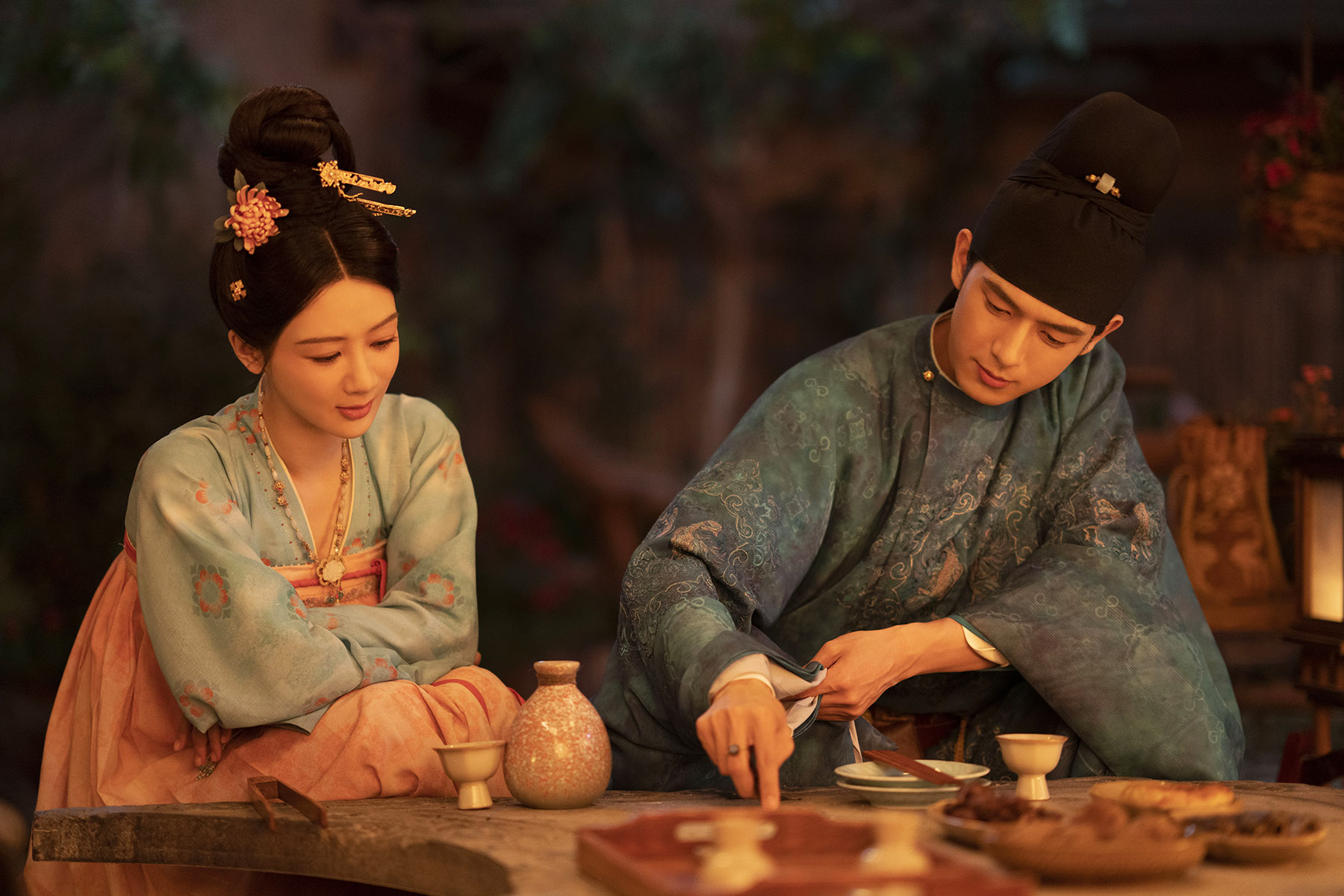
To enhance the lively street atmosphere, foods popular at the time, like steaming hot sesame cakes and noodle soup, are included to add a touch of authenticity to scenes.
The lighting is even more accurate, with Ding primarily using torches, kerosene lamps, and candles to illuminate nighttime scenes. This makes the series feel more authentic, as if it is a true reflection of the China of over 1,000 years ago.
Costumes, makeup and props are a crucial part of the creative process, and convey a wealth of information that doesn't need to be expressed through dialogue. Drawing inspiration from artifacts displayed in museums in Luoyang in Henan province and Xi'an, the prop department made exquisite pieces of jewelry props and more than 1,500 outfits.
"When the actors were on set using the props and dressing like people from the Tang Dynasty, it helped them immerse themselves more deeply in their roles," the director says.
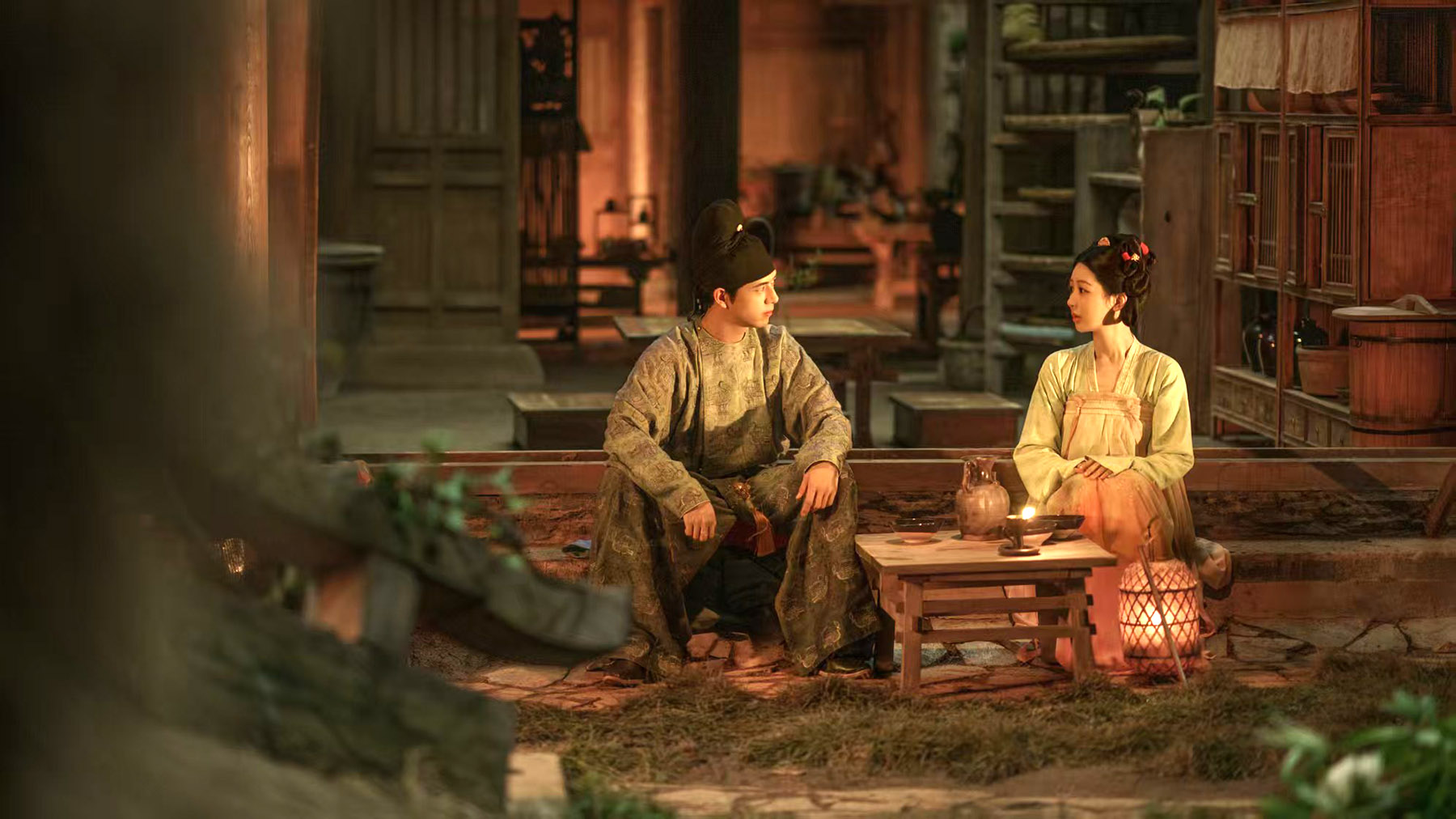
For art director Long Ya, Tangstyle costumes are a splendid chapter in the history of ancient Chinese attire, characterized by their opulence, vibrancy, boldness and flair.
To make a feature of fashion at the time, Long says they drew inspiration from Sancai, or tri-colored pottery, as well as the Dunhuang murals in the Mogao Caves in Gansu province.
Unlike most previous period dramas set in the era, the female characters do not wear earrings — a detail that sparked heated debate on social platforms such as Sina Weibo.
Long explains that based on their research, people during the Tang Dynasty followed Confucian beliefs, which posit that the body is a gift from one's parents and should not be harmed. "As a result, few people pierced their ears or wore earrings," Long says. "But it was fashionable for men to adorn their hats with flowers. We've incorporated these historical details into the show."
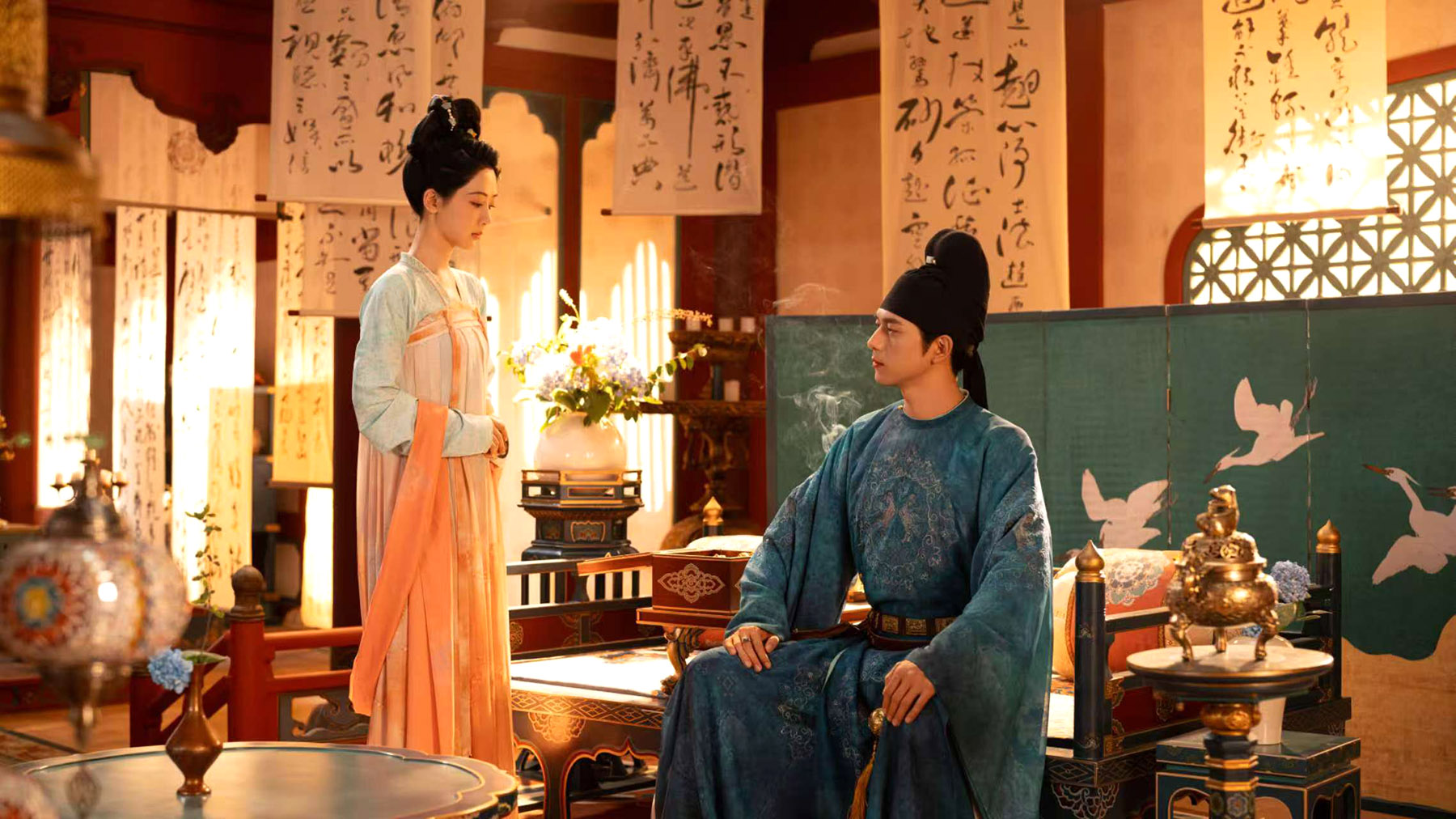
Ceremonies are also meticulously re-created. For example, in He's wedding scene, she gracefully holds a round fan to shield her face before stepping into the bridal chamber with her groom. The couple also cut a lock of their hair and place it in a pouch, symbolizing their lifelong bond.
ALSO READ: White Snake holds a sting in the 'tale'
Long also says that they recruited a horticulturist to show them on how to properly water peonies and care for them when they wilt.
Ding expressed his delight that more international viewers were getting a glimpse of the beauty of the Tang Dynasty — a glorious, prosperous era that had a profound influence during its time.
Contact the writer at xufan@chinadaily.com.cn


